When I started my garden, I had a fence using T posts and plastic deer fence. It worked for deer but didn’t keep out smaller animals that would come in underneath it. This year, since I was expanding the garden, I wanted to improve the deer fence as well. We decided to build a permanent wood and welded wire fence that extended underground with hardware cloth.
Building a deer fence on a sloped yard
My garden is on a slope, so that made it a little bit more challenging. I looked at a bunch of pictures online and brainstormed my ideas with Dad. He helped me decide for sure and helped me come up with a list of what to buy.
My fence varies in height due to the slope, but is around 5′ to 6′ high in most places, but ranges from 4′ to 6 1/2′. Technically it should be a little higher for deer, but my old fence was much shorter and less sturdy and it kept my local deer out.
Materials list for deer fence
The quantity of everything will depend on your garden size.
POSTS: 4×4 – 8′ Treated Pine (rated for ground contact) – we did these every 8′, at the ends and beside the gate
TOP & BOTTOM RAILS: 2×4 – 8′ – 2 per fence section
CONCRETE: Bags of Fast Setting Quikrete
FENCE PANELS: 12.5 gauge welded wire fencing – enough for the total linear feet of the fence
BOTTOM/UNDERGROUND: 19 gauge hardware cloth – enough for the total linear feet of the fence
SCREWS: Outdoor rated screws
FENCE ATTACHMENT: Poultry galvanized staples
Cost
I spent about $525 on all of the materials listed above for 52′ linear feet of fencing. I also spent $75 to rent an auger to dig the holes for the posts. And, my dad made the gate for us and spent about $40 on the materials for it. So, a grand total of $640 for materials and rental.
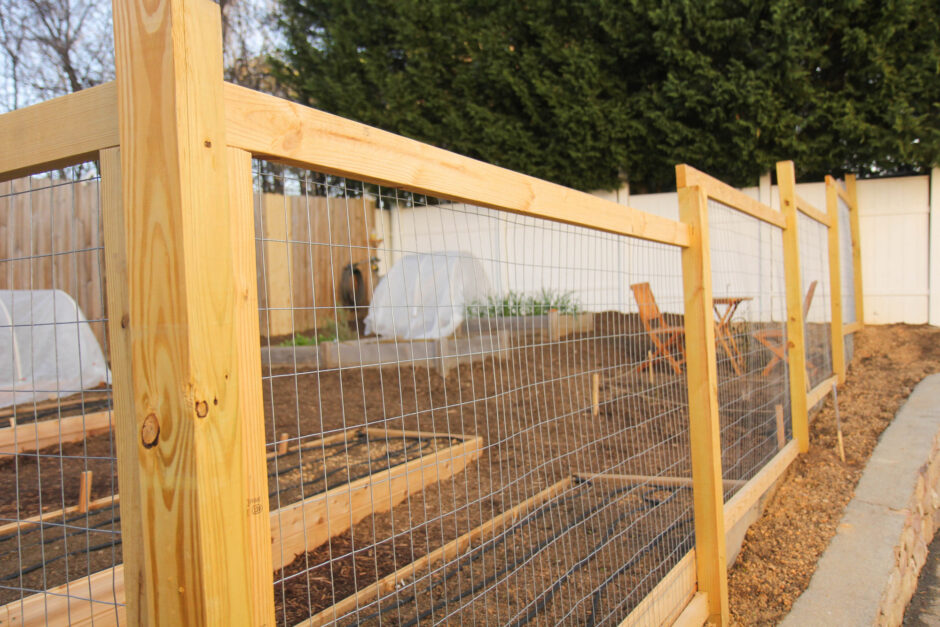
Deer fencing materials and choice
I opted to go with a roll of 5′ fencing instead of cattle or hog panels for several reasons.
- It’s cheaper.
- Easier to transport. I ordered it and they shipped it to me. The feedlot panels are 16′ long and I don’t have a truck.
- The spacing in the holes is smaller. It’s 2″ x 4″ for the one I bought. Cattle and hog panels have up to 6″ x 6″ openings on part of them, which is too large for me. I am trying to keep out rabbits, raccoons, squirrels, etc.
- The height of the feedlot panels varies from 34″ to 52″ – what I got is 55″ high.
The one potential downfall is that my fencing is not quite as sturdy, but it’s pretty sturdy and as sturdy as I need for this purpose. All of the other reasons beat this one out.
Small animal prevention
To prevent small animals from coming underneath the fence, we used hardware cloth. This works better for small animals because it has 1/2″ openings, as opposed to the larger grid on the welded fence. We decided to not stop at the ground level, but rather dig a trench and bury it at least 6″ below ground. With my old fence, I had squirrels, rabbits, raccoons, possums, etc. Since this was installed, I haven’t had one single visitor and I have a camera, so I know.
Do I really need to go to all of this trouble?
A resounding yes. My old temporary fence kept deer out, but not small mammals. When we had the old fence down so we could build the new one, we had every forest visitor possible. See the video here.
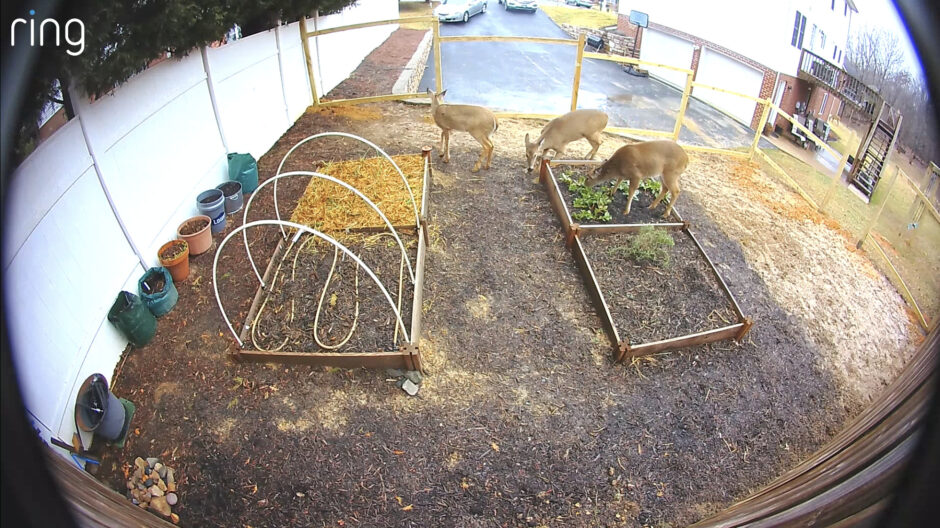
Fence building steps
- Mark out where the posts will go with spray paint. We did ours every 8′, on the ends and on each side of the gate.
- Dig holes for the posts. We did this in February and the ground was hard. We rented a towable auger for 4 hours for around $75. It was so worth it to us to not have to do it manually.
- Level and brace the posts. Then, mix and pour the concrete.
- Use the 2x4s to span between the posts – a top rail and a bottom rail. Screw in from the sides or toe screw into the posts.
- Install the gate.
- Measure, cut and install the welded wire fencing. We affixed it to the interior side using poultry staples.
- Because our fence is sloped and the space under the panels varies, we used hardware cloth below the fence panels and then dug a trench and extended them underground. This should prevent a decent amount of the small critter traffic.
- Finally, we added a 4×4 underneath the gate to eliminate the gap. Additionally, we dug a small trench and added hardware cloth underneath it as well for extra security.
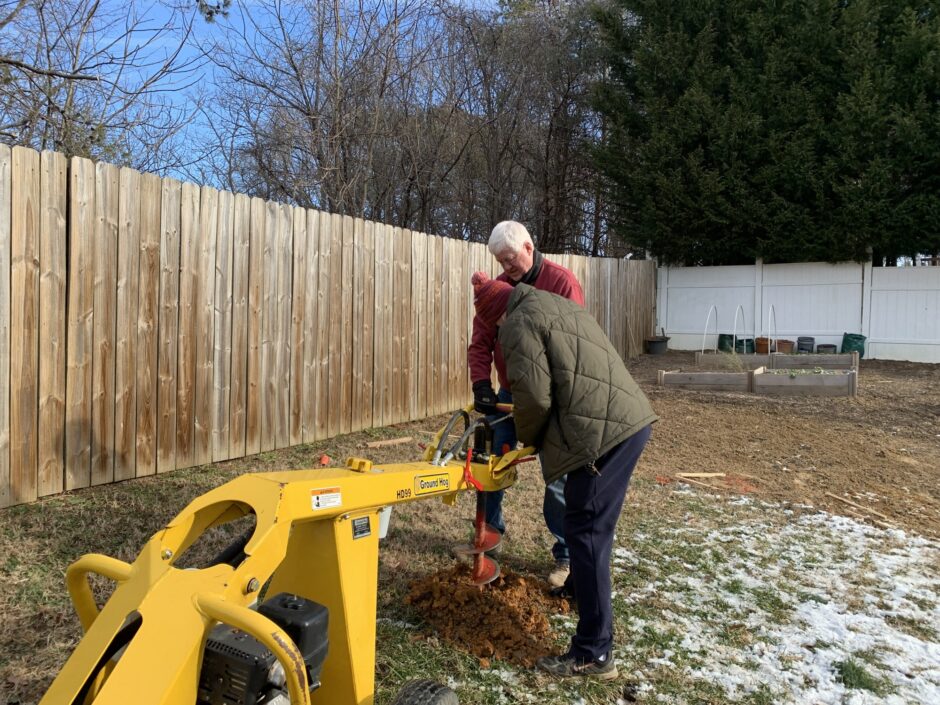
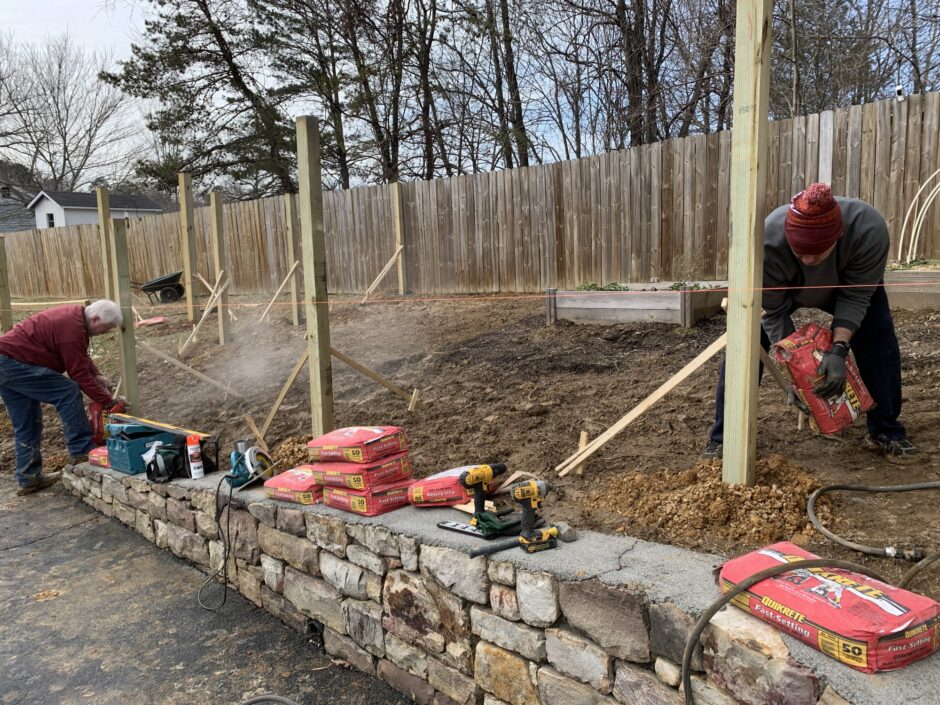
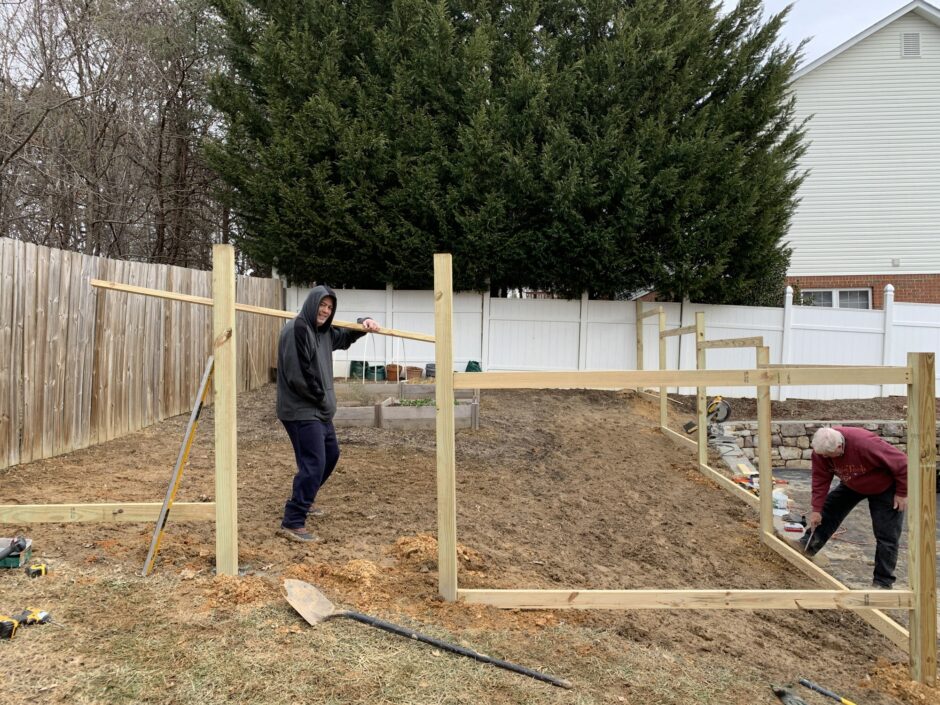
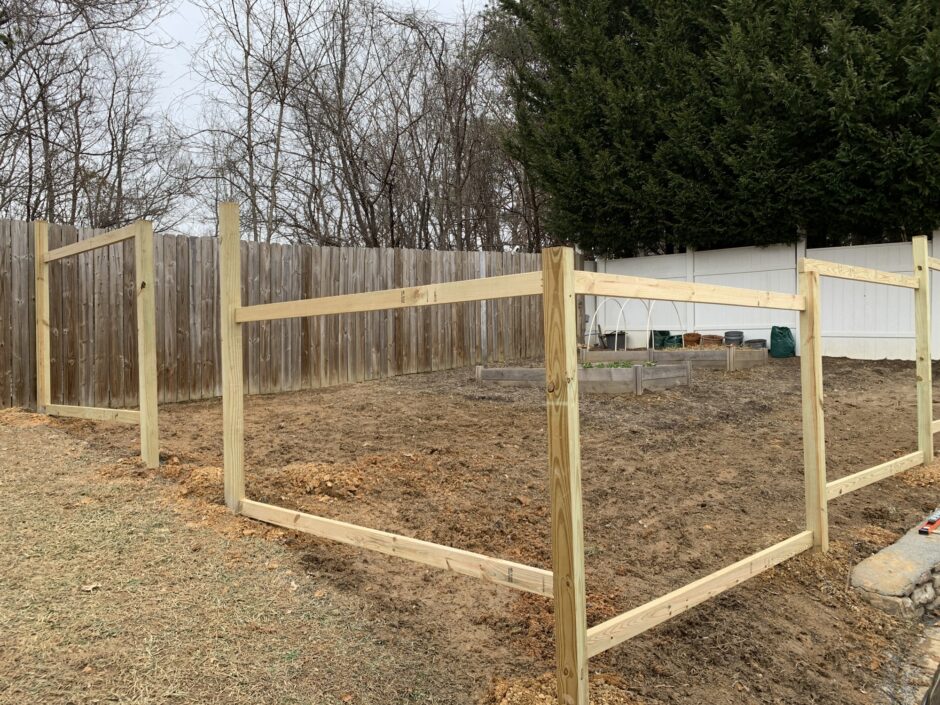
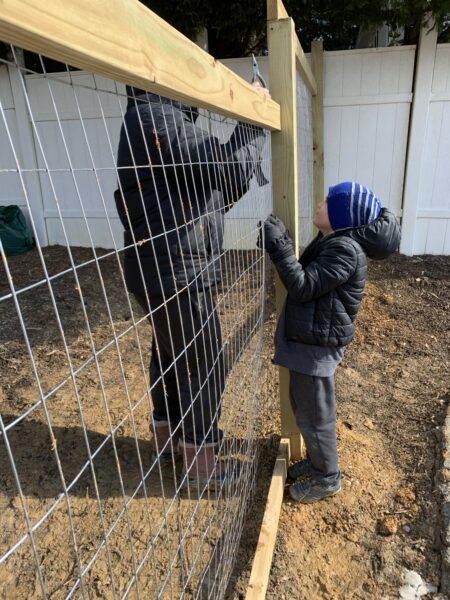
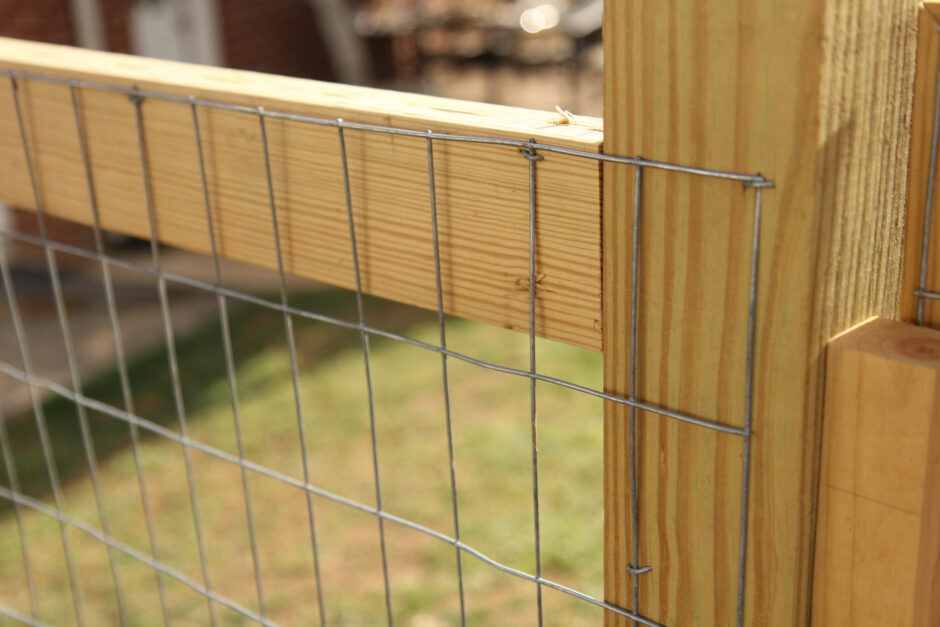
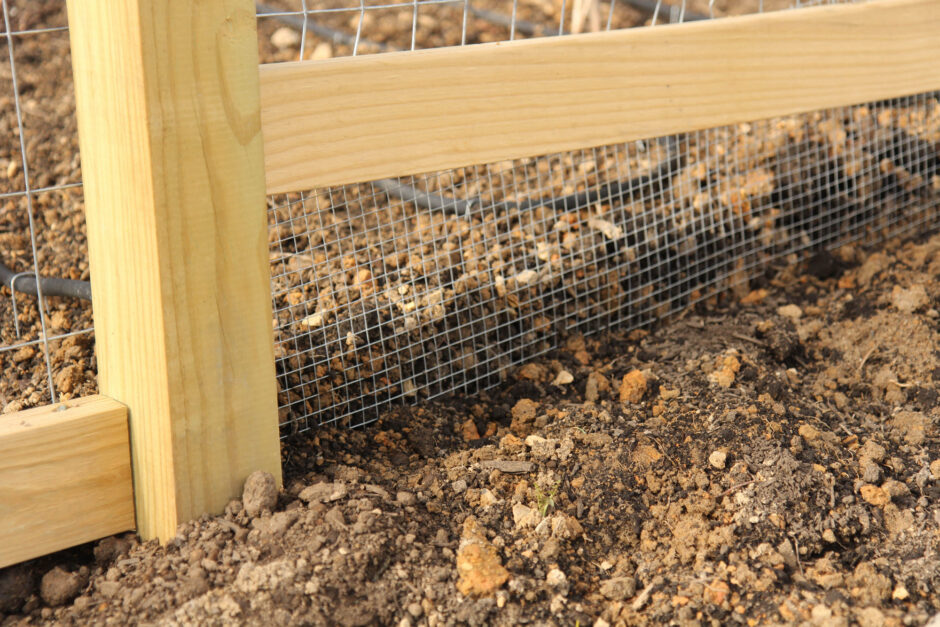
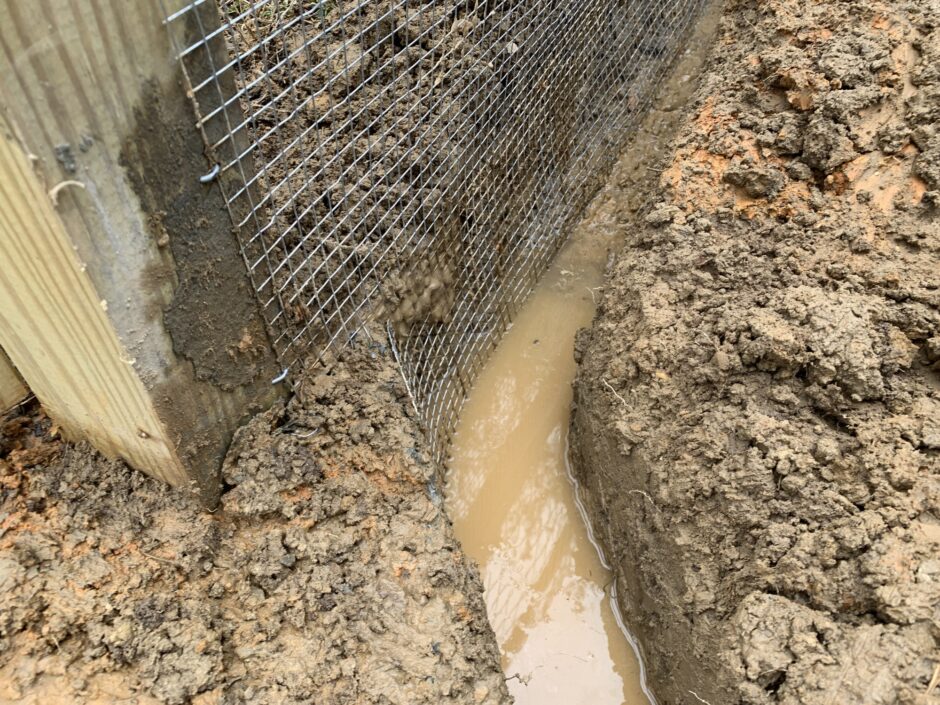
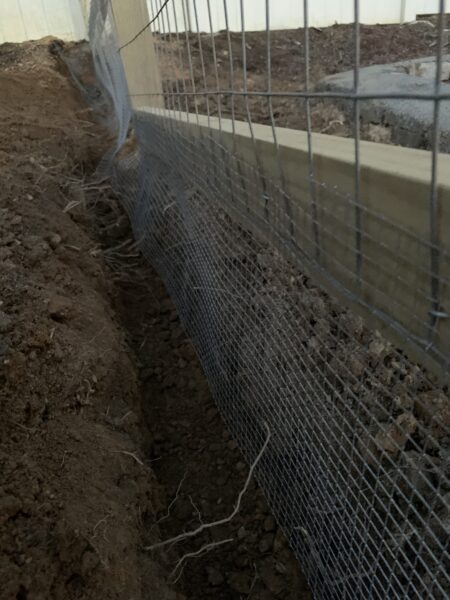
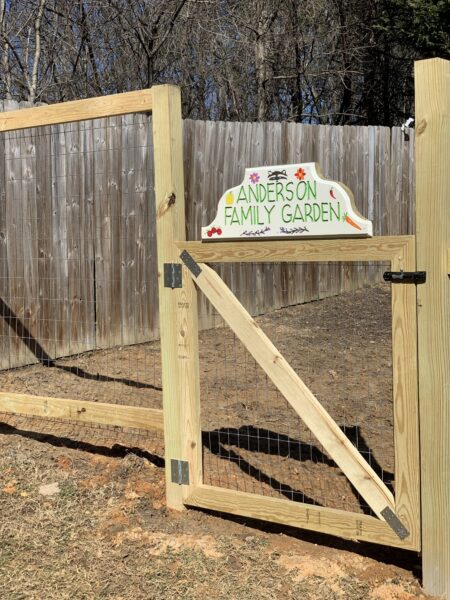
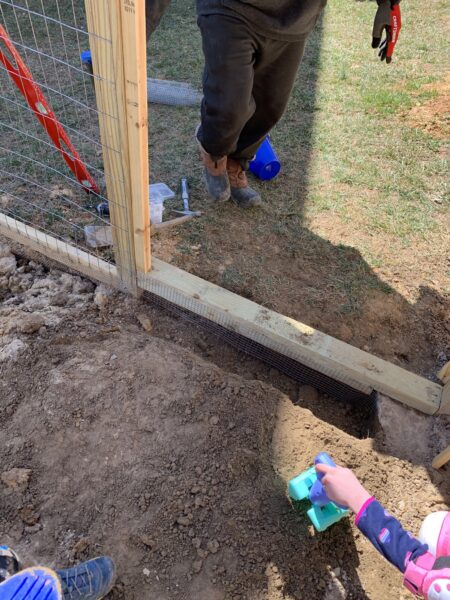
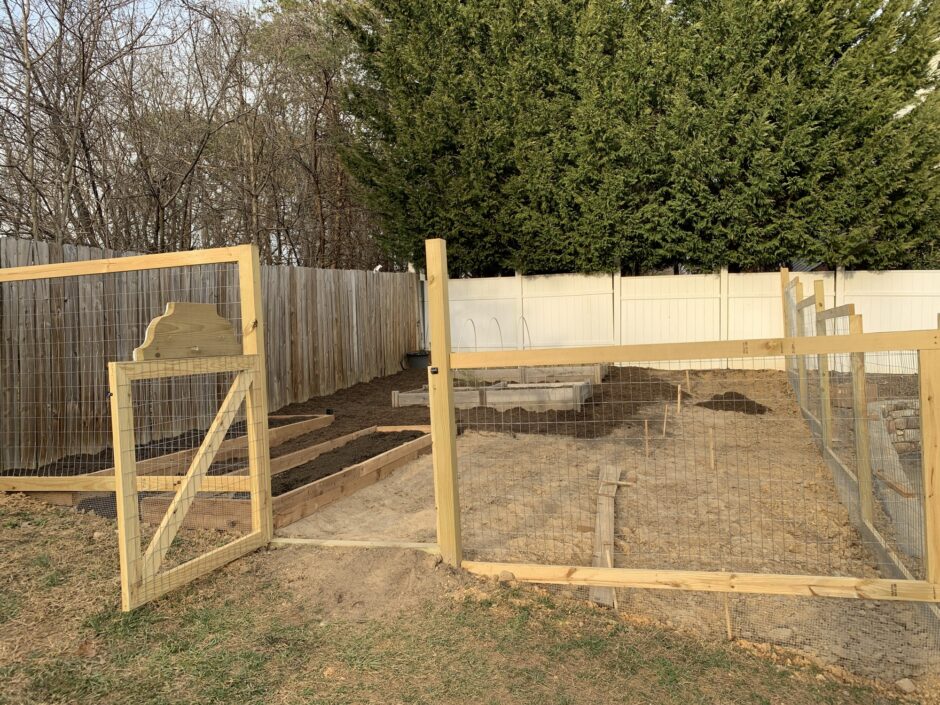
The last thing we did was cut off the tops of the posts to make them all even with the top of the fence.
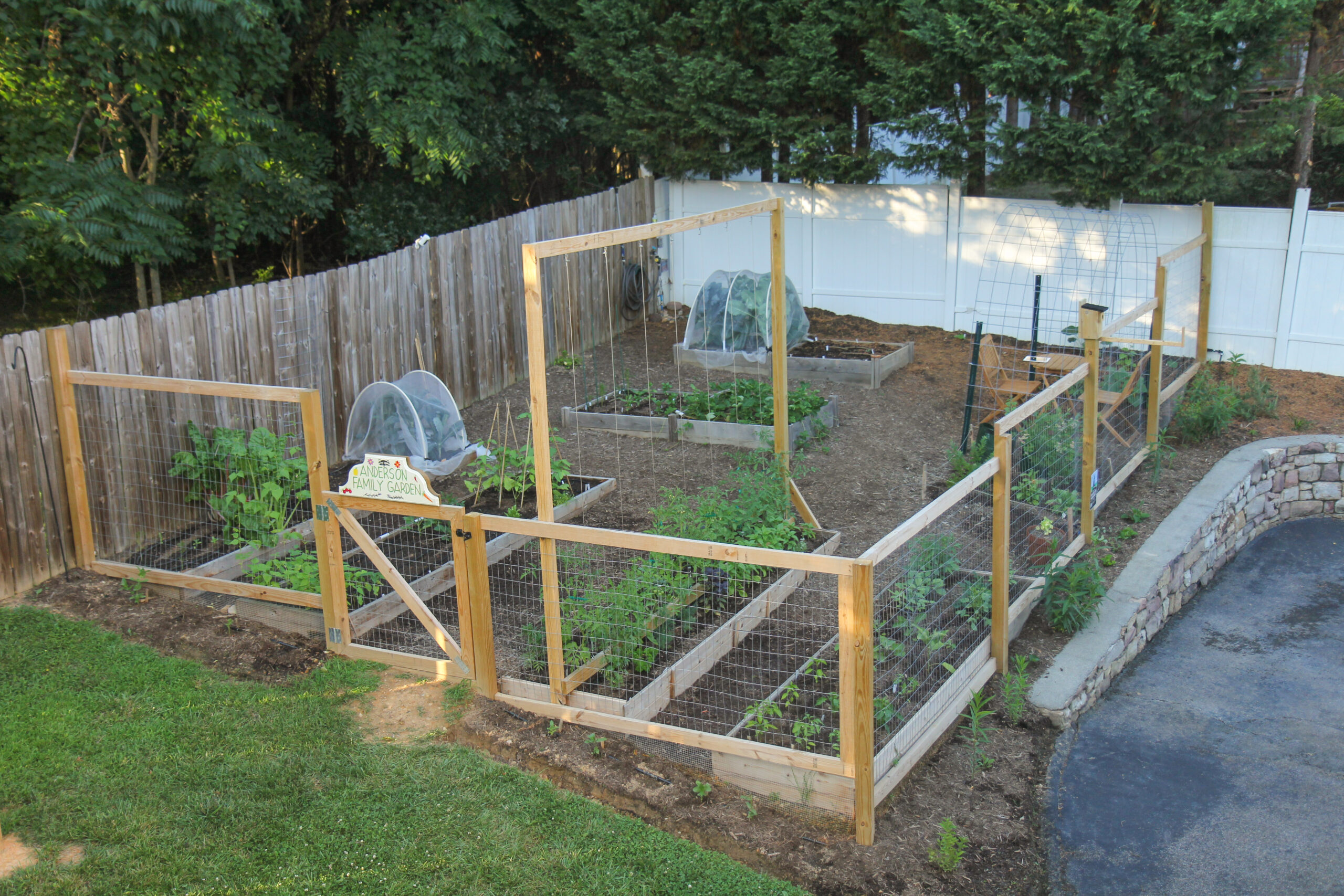
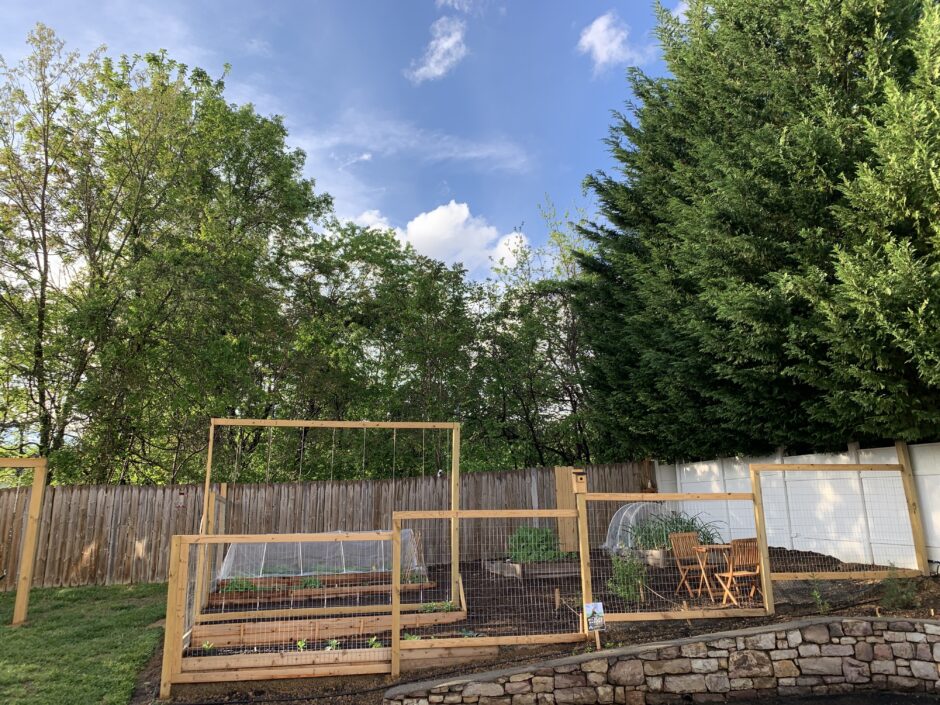
See more photos of the fence on my Instagram account.
Grow with me
See my other garden or wildlife posts.
Get new posts in your inbox by subscribing.
Follow on Instagram.

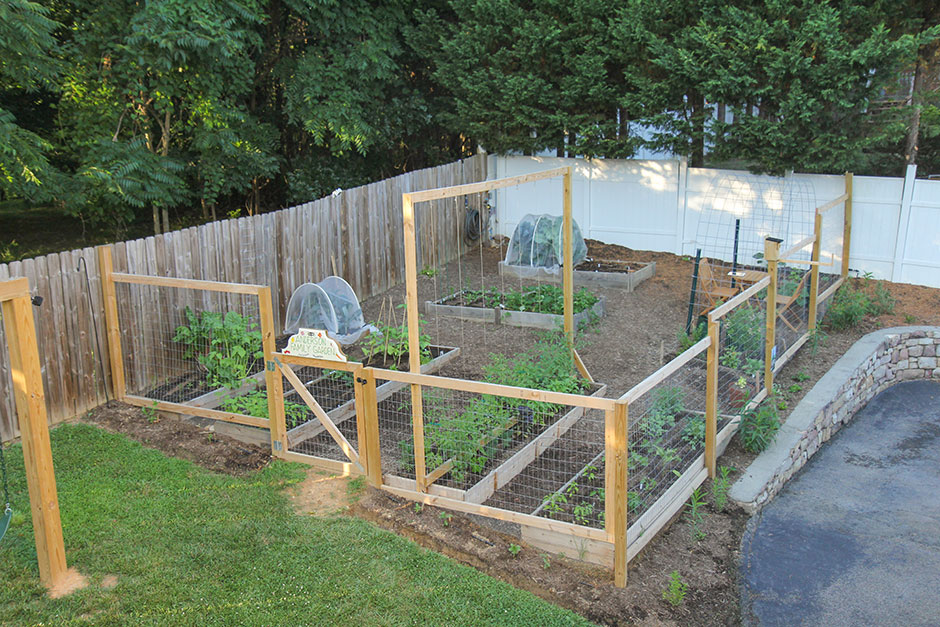
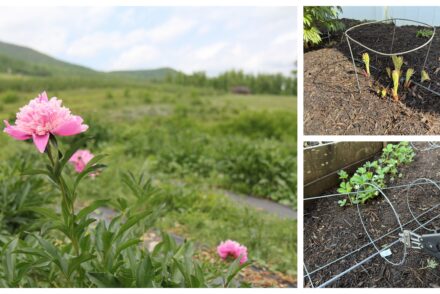
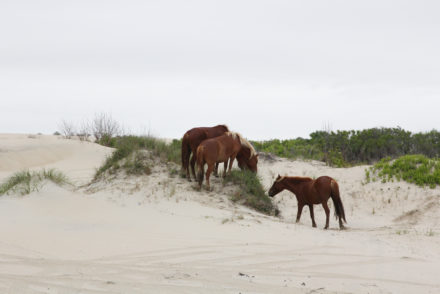

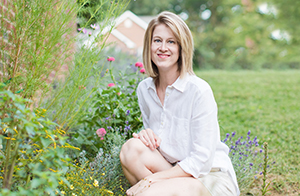
No Comments